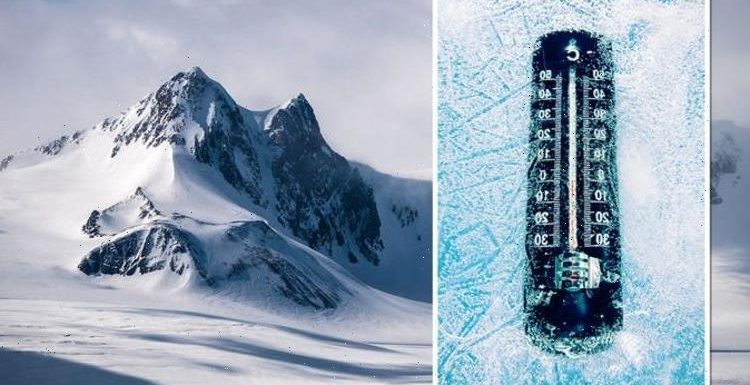
Antarctica: Melting ice ‘serious’ for London warns scientist
We use your sign-up to provide content in ways you’ve consented to and to improve our understanding of you. This may include adverts from us and 3rd parties based on our understanding. You can unsubscribe at any time. More info
Between April and September this year, the average temperatures at the Amundsen–Scott South Pole Station dropped to a bone-chilling -61C (-78F). These were the coldest average temperatures recorded in the Antarctic South Pole since records began in 1957 but may come as a surprise to most. The extraordinary cold was recorded despite the planet as a whole experiencing one of its hottest summers ever.
Climate data published by the US National Oceanic and Atmospheric Administration (NOAA) shows surface temperature departure during this year’s June to August period was “the fourth hottest highest” on record.
To date, only the June to August period of 2016, 2019 and 2020 were warmer.
The Antarctic’s bitter winter was likely the product of a strong polar vortex in the stratosphere, an atmospheric layer that begins about 33,0000ft or 6.2 miles (10km) up.
According to Amy Butler, an atmospheric scientist at NOAA, the vortex would have helped trap cold air over the South Pole.


She told The Washington Post: “Basically, the winds in the polar stratosphere have been stronger than normal, which is associated with shifting the jet stream toward the pole.
“This keeps the cold air locked up over much of Antarctica.”
Consequently, temperatures at the South Pole station were about 2.5C (4.5F) colder than the recent 30-year average.
The data was first published on Twitter by climate journalist Stefano Di Battista who described it as an “extraordinary coreless winter” at the South Pole station.
He tweeted: “The average has been -61.1C the coldest ever recorded.
Antarctica: Scientists find area where no life exists
“This value set -2.2C on the reference 1981 to 2010 and -2.5C on 1991 to 2020. Previous record -60.6C in 1976.”
The data has since been verified by researchers at NASA’s Global Modeling and Assimilation Office and published by The Post.
The freezing temperatures may have also helped Antarctica drive its sea ice levels to the fifth-highest on record.
And though this was the South Pole’s coldest winter, on average, temperatures across the Antarctic have fallen way below -61C (-78F) on individual occasions.


The coldest-ever temperature recorded on Antarctica hit -89.2C (-128.6F) on July 21, 1983, at the Russian Vostok Station in Princess Elizabeth Land.
Recent temperatures came close, however, according to journalist Maximiliano Herrera.
Mr Herrera runs the Twitter account Extreme Temperatures Around The World where he monitors the hottest and coldest temperatures on the planet.
On October 1 he tweeted: “Exceptional cold in the Antarctic Plateau.
“The Russian Base of Vostok on 30 September dropped to a minimum temperature of -79.4C, which is only 0.6C above the world lowest temperature ever recorded in October (recorded at the former Plateau Station, also in Antarctica).”
And the warmest temperature was recorded on January 30, 1982, when thermometers hit 19.8C (67.6F) at the Signy Research Station on Signy Island.
None of this should be taken as a sign that global warming is not driving temperatures up, however.
The overwhelming scientific consensus is that the emission of greenhouse gasses since the outbreak of the Industrial Revolution has warmed the planet.
Intergovernmental Panel on Climate Change said: “Scientific evidence for warming of the climate system is unequivocal.”
Source: Read Full Article